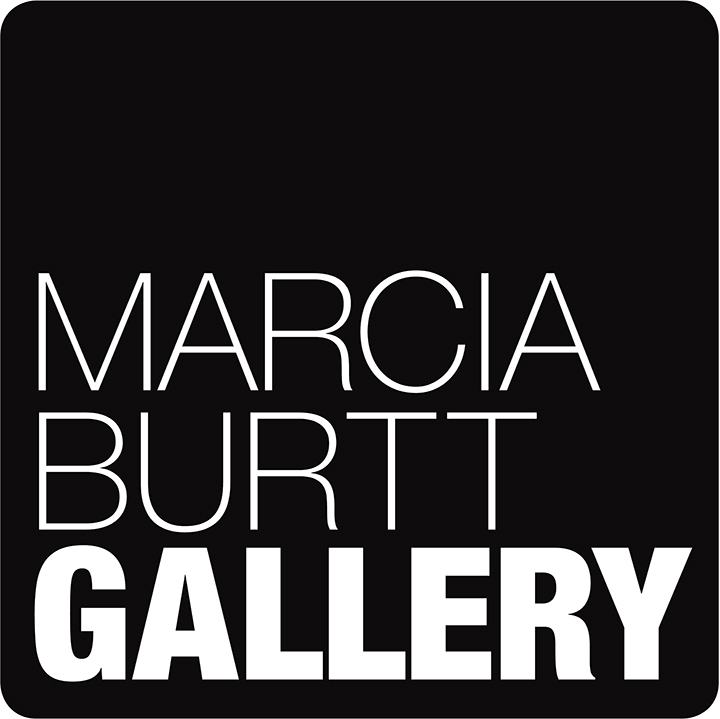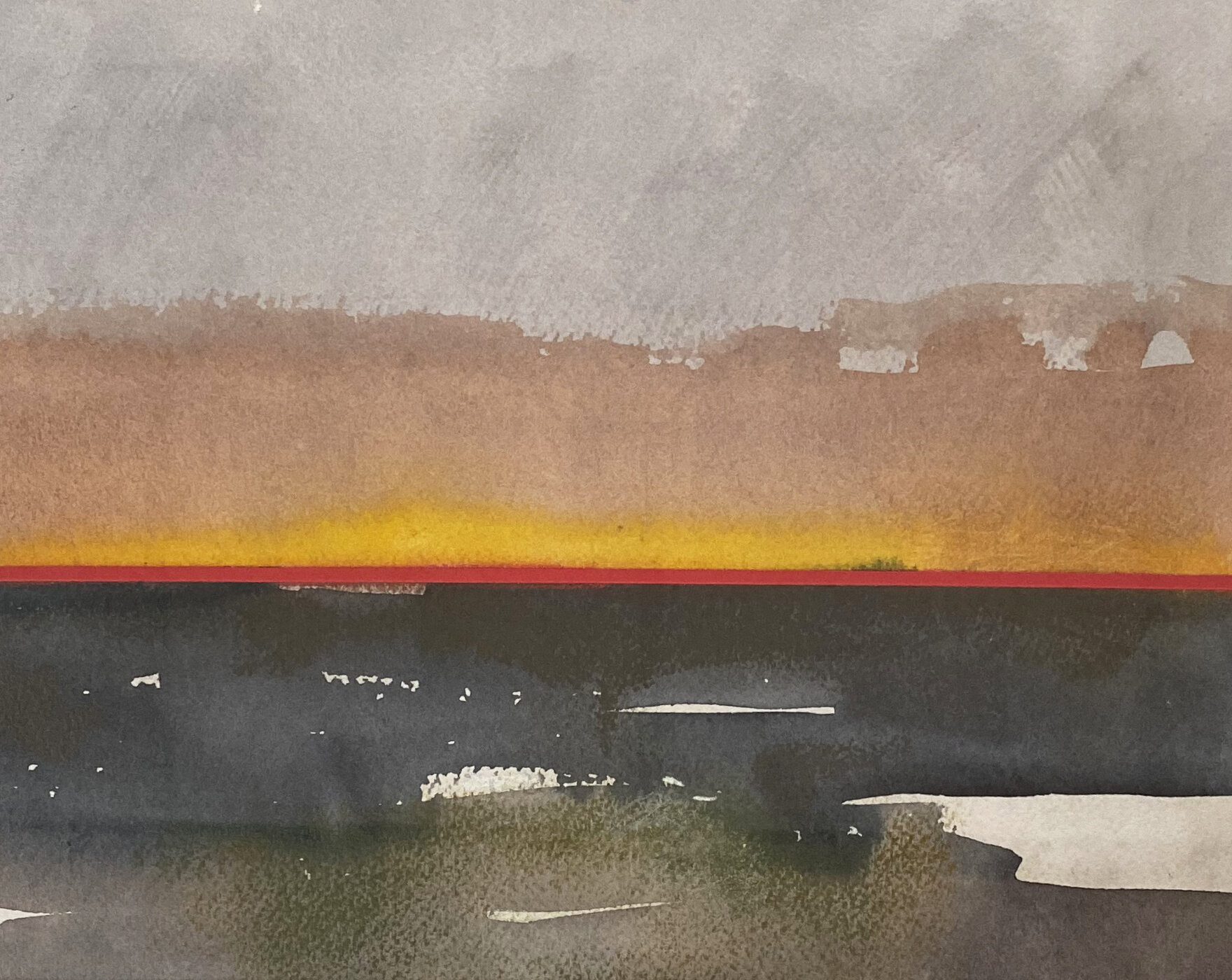Abstraction in Realism: Doyle, Krause, and Petty
Patricia Doyle, Marilee Krause, and Susan Petty, featured in our Coastal Influence exhibition, move between abstraction and realism using gesture, minimalism, and precision.
At first glance, Residual Current by Patricia Doyle appears to be an abstract painting — bands of color brushed across a large canvas. But then rocks emerge, and reflections of buildings and streaks of light on wet sand. It’s an abstraction of a larger view, a beautiful visual found looking down at the beach.
Similar energy and big brushstrokes are applied to her paintings that feature a wider view. Cambria—From the Terrace and Rising Tide: Summer eschew detail in favor of gesture. Doyle’s broad strokes echo the movement of the ocean; her short sharp stabs form the rocks.
Even in a more subdued painting, Rising Tide: Summer, blurred edges convey a scene in flux.
Blooms of wet-on-dry watercolor form a tree’s canopy and shadow, introducing an element of chance in Beach Tree. Krause uses a dry brush to add color on the top layer of the textured paper, allowing white to speckle through. Pencil lines and splayed brush swipes are additional evidence of her spare process that forms the overlook view.
Marilee Krause’s Silver Morning could have been made with ten strokes. A minimal, monochrome mix of washes and sharp-edged strokes defines an ocean view. Paper left blank creates the silver glare in the ocean and sky. Tips of the horizontal brush strokes represent wavy water while preserving the artist’s simple gestures.
This back and forth between illusion and method is even more prominent in Harbor. Colorful squiggly lines over a blue underpainting become dreamy rippling reflections on a harbor basin.
The scale and subject of Susan Petty’s Water Circus suggests the influence of Abstract Expressionism. But the method is more in line with Pop Art. This interior of a crashing wave is not abstract, nor created from gesture, drips, or stains. Inspired by Bill Dewey’s wave photographs, the amorphous shapes represent the splash of water and seaweed rather than spontaneous impressions on canvas.
The splashing wave is revisited in Meditation III, but with even greater precision. Tiny ocean particles are meticulously rendered in cross-hatched graphite on paper. The detailed process that went into the drawing is as much its subject as is the rendered water.
Petty’s eclectic approach expands further in Rock, Water, and Air. Shapes similar to those found in the wave painting and drawing now form details of a realist rocky island. But it is a stylized realism with a grey border that slips into the land and water, and that matches a distant island. Subtle orange and green moss-covered cliffs and blue ocean materialize out of this flat grey atmosphere.



